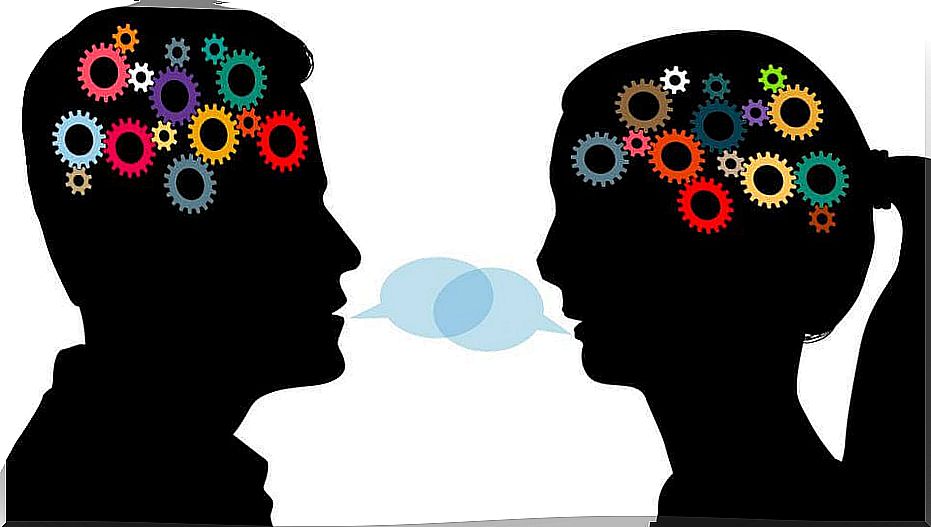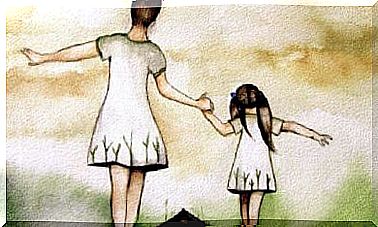Aphasia: How An Accident Can Leave You Blank

Problems in communication, in the articulation, speech or intonation of words and even in reading or writing. Few language disorders are as complex as aphasia. There are different types of them, but they all have one element in common: a cerebral alteration that occurs with dysfunctions in any linguistic modality.
On the other hand, there is an important aspect that we must understand. The aphasic patient does not have only a language problem. This clinical condition is often associated with a brain injury, hence there may be other functional alterations; such as a hemiplegia. In these cases, it is essential to always have a good neuropsychological evaluation.
Likewise, when dealing with these types of disorders, we must always apply a multidisciplinary approach. Thus, in addition to the neurologist, the person with aphasia needs their doctor, neuropsychologists, occupational therapists, physical therapists, social workers, nurses, etc. The family must also have the support of professionals to know how to help and assume this new reality of their loved one.

Aphasia, a disorder associated with brain injury
The aphasia is described as an alteration of the ability to use language or language acquired loss resulting from brain injury. Consequently, aphasia is understood as an acquired disorder in the ability to produce oral language.
- It is in the left hemisphere where, for the most part, linguistic functions are lateralized, although on certain occasions they may have a hemispheric representation. Thus, language has a cortical and subcortical component.
- At the cortical level, we find specific areas that control motor aspects of speech (movements for the oral production of sounds, articulation, praxis) and aspects related to language comprehension.
- On the other hand, at the subcortical level, the production and understanding of language is made possible by other cognitive functions such as attention, working memory, long-term memory and executive functions.
What causes an aphasia?
The normal functioning of the brain can be affected by different neurological pathologies. Thus, among the main neurological disorders that can lead to language disorders we find:
- Stroke (CVA)
- Head injuries.
- Brain tumors
- Nervous system infections.
- Nutritional and metabolic diseases
- Degenerative diseases.
Main causes of neurological alteration
Strokes are one of the main causes of neurological disorders in adults, which is why early recognition of the symptoms is considered of vital importance in order to act as quickly and efficiently as possible. The cerebrovascular disease corresponds to any alteration in the cerebral functioning originated in some pathological condition of the blood vessels.
Within the LCAs, we find two large groups:
- Ischemia : accidents produced due to the decrease or interruption of blood flow in the brain tissue (thrombosis, embolism, arteriosclerosis).
- Hemorrhages : they are secondary to the rupture of a vessel that allows the filtration of blood within the brain parenchyma.
Symptoms of stroke
The form of appearance of strokes is quite characteristic: a focal neurological deficit occurs suddenly (hemiplegia, aphasia …). Still, the symptoms largely depend on the location of the brain involvement.
The most frequent refers to the following:
- Loss of strength in an arm or leg, or paralysis of the face (hemiparesis / hemiplegia).
- Difficulty expressing yourself, understanding what is being said or unintelligible language (aphasia).
- Difficulty walking, loss of balance or coordination.
- Dizziness, sudden, severe and unusual headache, almost always accompanied by other symptoms.
- Loss of vision in one or both eyes.

Neuropsychiatric symptoms
The probability of suffering post-stroke depression is higher between the first three months and twelve after the stroke and begins to decrease thereafter. Between one-third and one-half of stroke patients develop depressive symptoms related to feelings of sadness and isolation, irritability, sleep disturbances, and indifference to therapy.
There is no significant correlation between the presence of depressive symptoms and the etiology and extent of the injury, but rather with the degree of subjective concern for one’s own state of health. The temporal pattern of post-stroke depression coincides with the duration of the development of non-pathological grief, which is why the idea of grief is beginning to be thought of as a reaction to the loss of functional dependence.
Anxiety understood as fear or apprehension, accompanied by autonomous physical symptoms, can give rise to the presence of a Generalized Anxiety Disorder between 1 and 30% of cases. This symptomatology appears as the presence of dysfunctional cognitions related to the fact of having suffered a stroke and its future consequences.
Neuropsychological intervention in stroke
A neuropsychological evaluation is carried out using standardized tests in order to develop the cognitive profile of the patient. Based on this profile, an intervention plan is established and the rehabilitation of the affected cognitive functions is carried out through the use of substitute, compensatory or restorative methods in order to achieve the maximum functionality of the patient.

Final considerations at the social level
We should not give the person a greater dependence than he already has. The ideal is to maintain an effective communication system that allows you to express your feelings and wishes. On the other hand, we must not forget the needs and interests of the person, they must be taken into account at all times.
Likewise, and finally, it is appropriate to offer adequate support to the family so that they know at all times how to act to reduce anxiety and facilitate the adaptation of the family member to each daily challenge and problem.









